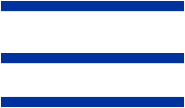 Untreated aluminum (Al)boasts a fairly high corrosion resistance in most normal environments. Even so, aluminum surfaces suffer from various types of corrosion in many urban, rural and industrial situations. If your aluminum surfaces, parts, structures, or machinery require corrosion protection, simply use the contact form on the right to let us know your tasks, so we may help you select the best product for your needs (or direct you elsewhere when a STEEL-IT® coating is not the advised solution).
Untreated aluminum (Al)boasts a fairly high corrosion resistance in most normal environments. Even so, aluminum surfaces suffer from various types of corrosion in many urban, rural and industrial situations. If your aluminum surfaces, parts, structures, or machinery require corrosion protection, simply use the contact form on the right to let us know your tasks, so we may help you select the best product for your needs (or direct you elsewhere when a STEEL-IT® coating is not the advised solution).
Reinforced for best protection with custom-engineered 316L stainless steel flake, STEEL-IT® coatings effectively block some common forms of corrosion on aluminum and its alloys, while additionally offering the proud resistance of stainless steel against the effects of heat, wear, abrasion, hard washdowns, the elements, and interaction with food.
Aluminum with Stainless Steel: the Best of Both Worlds
In a nutshell, STEEL-IT® affords you the flexibility to work with aluminum as your metal of choice, while enjoying the protective benefits of stainless steel without the latter’s most important disadvantages.
Aluminum is the cheaper, lighter, softer metal with a much higher electrical conductivity. Although aluminum itself is widely used for its toughness against corrosion, stainless steel has a somewhat different set of properties and hence advantages. For example, stainless steel is the much harder metal, less chemically reactive, with much lower electrical conductivity and much higher heat resistance. Importantly, aluminum is much more prone to chemical interaction with food and is consequently considered less food safe than stainless steel. (STEEL-IT® coatings are officially USDA-approved for incidental contact with food.)
Stainless steel displays much higher corrosion resistance than aluminum under a high pH. Aluminum starts to corrode rapidly at approximately pH 10 and dissolves in a solution with a pH of 12. For that reason, an aluminum surface can be damaged by a high-pH oven cleaner aerosol, while stainless steel is immune to it. Many though not aerosols such as hair sprays, air fresheners and insecticides are more prone to react with aluminum than with steel, depending on their respective formulas. Organic halogens (e.g. carbon tetrachloride, widely used by the cleaning industry and in fire extinguishers) can violently corrode aluminum.
The comparative disadvantages of stainless steel – its higher price and much higher density and mass – are overcome when stainless steel is applied in the form of a STEEL-IT coating finish. Please contact us via the Web form to let us know what kinds of challenges you are facing in protecting aluminum surfaces, and we will promptly let you know whether Steel-It right for you and which product fits best.
Some Common Forms of Aluminum Corrosion
Aluminum’s natural resistance to corrosion is due to the spontaneous formation of an adherent, impermeable layer of aluminum oxide (Al2O3) – the so-called passivation layer – which tends to self-repair immediately even when breached due to aluminum’s high occidation rate. The common AlMgSi alloys have an even higher resistance to corrosion. Often, however, this is not enough. Apart from the passivation layer, aluminum itself is chemically a highly reactive metal. In challenging environments, aluminum is subject to pitting, crevice corrosion, chemical, and less commonly other types of corrosion. The presence of copper or of certain other metals in aluminum alloys makes them especially vulnerable to a corrosion attack.
Pitting, the most common type of aluminum (aluminum) corrosion, occurs in the presence of salts (chlorides) dissolved in water or moisture, causing an aesthetic ugliness and in some cases undermining aluminum’s strength. Trying to remove pitting with alkaline detergents can prove too harsh for aluminum and destructive in its own ways. STEEL-IT works well for the prevention of corrosive pitting. As a bonus, although a common recommendation on the design of aluminum surfaces is to adhere to profiles that avoid angles and pockets where water or moisture can gather, STEEL-IT coatings may help overcome this limitation and support greater design flexibility.
Crevice corrosion takes place in narrow crevices with accumulated moisture, most typically in marine atmospheres or on the exteriors of vehicles, resulting in “water staining”. Rainwater or condensation penetrates between metal surfaces through capillary action. (A typical cause of condensation is the difference between night and day temperatures in indoor facilities or under tarpaulin.)Furthermore, open air or atmospheric corrosion of aluminum can happen during prolonged exposure to condensation wetness(over 80% humidity at condensation temperatures, just above 0°C).A sulfurous atmosphere may be the cause of some pitting, but a high concentration of chlorides and other salts in the atmosphere can undermine aluminum’s durability, as can dirt corrosion (caused by dirt or mud buildup on an aluminum structure) can likewise reduce aluminum’s strength. Here too, STEEL-IT coatings for aluminum come to the rescue.
Another environment that canrender aluminum’s strength more vulnerable is soil. Present-day knowledge of specifics of soil-induced aluminum corrosion is far from complete and needs a great deal more research. Soil varies a great deal in chemical composition and moisture levels, making it hard to predict how an embedded aluminum structure will react to the combination of minerals, organic matter, pH, and so on. that it comes into prolonged contact with, along with the soil’s electrical conductivity. For that reason, reinforcing aluminum structures that are to be interred in soil with a protective coating is often a requirement, and Steel-It® offers an excellent, economically competitive choice.
In water, aluminum’s durability is vulnerable in the presence of chlorides and heavy metals. Pitting is common even in natural fresh and drinking water, but a harmful attack increases where water is stagnant and prolonged wetness, and with exposure to sea water, to which some Al alloys show more resistance than others.
In spite of aluminum’s decent resistance to a wide range of chemical agents, it is vulnerable to corrosion attack in low and high pH environments (pH below 4 or above 7) due to the destruction of the passivation layer. For this reason, inorganic acids and heavy-duty alkaline solutions – except for nitric acid and ammonia – can be extremely corrosive to aluminum structures. The effect of the presence of heavy metals (notably, copper, lead, mercury, nickel, and tin) in aluminum alloys is a major issue in acidic environments. Even moderately alkaline water solutions will likewise cause corrosion unless preventive measures are taken. Alkaline environments strip off aluminum’s naturally forming oxide layer. On building sites, aluminum is easily and permanently stained when it comes into contact with mortar, concrete and other damp alkaline construction materials. Worse, aluminum cast into concrete may corrode when the concrete fails to dry in a timely fashion. Aluminum corrosion within concrete is highly undesirable as its volume may produce cracks in the concrete. STEEL-IT chemical corrosion resistant coatings protect aluminum, blocking corrosion and eliminating or significantly reducing most of these risks.
Another example of aluminum degradation is due to erosion-corrosion caused by high velocity, turbulent water. This type of aluminum corrosion progresses slowly in plain water, but accelerates significantly at pH levels above 8, especially if the water streams contain carbonate and silica.
STEEL-IT® coatings provide an excellent extension of aluminum’s natural anticorrosive properties, prolonging its life in challenging environments. Please use the quick contact form to address the specifics of your project.






